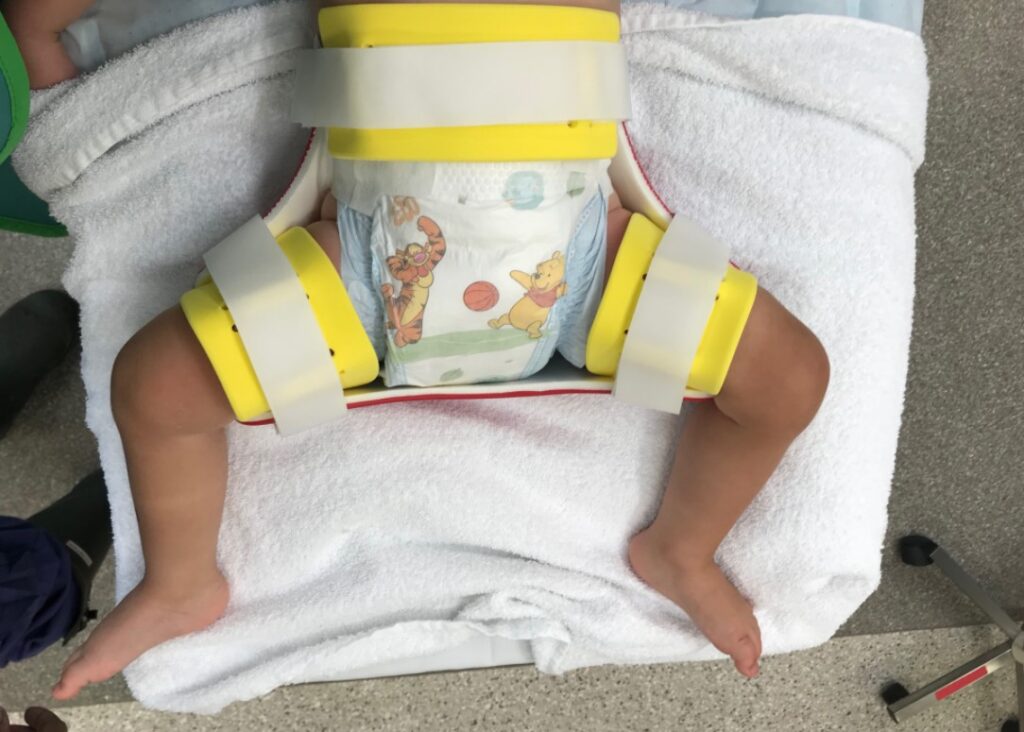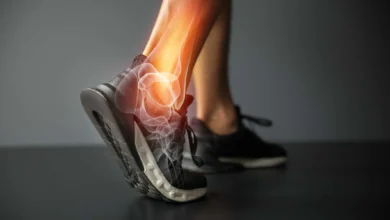
How Do You Treat Developmental Dysplasia of the Hip?
Developmental Dysplasia of the Hip (DDH) is a condition that affects the development of the hip joint. It can cause problems with mobility and range of motion, requiring treatment. The following are the four main ways to treat developmental dysplasia of the hip:
Physiotherapy

Physiotherapy is the mainstay of treatment for developmental dysplasia of the hip (DDH). Treatment focuses on improving range of motion and muscle strength and preventing contractures. Exercises may include:
Passive Stretching
When a therapist engages you in passive stretching, they will use their hands to help lengthen the muscle. This is a slow and controlled stretch held for about 30 seconds. The purpose of passive stretching is to improve the range of motion.
Active Stretching

You will be asked to move the affected muscle against resistance with active stretching. This type of stretch is good for improving strength and flexibility.
Thera-Band Exercises
Thera-band exercises use elastic bands to provide resistance. These exercises help strengthen the muscles around the hip joint.
Aquatic Therapy

Swimming or other water-based exercises can help improve range of motion and muscle strength in people with developmental dysplasia of the hip. The buoyancy of the water helps reduce stress on the joints, making it a safe and effective way to exercise.
Isometric Exercises
These are exercises where you contract a muscle without actually moving it. For example, pressing your hand against a wall and holding it there. Isometric exercises can help strengthen muscles around the joint.
Weight-bearing Exercises

By gradually adding weight to the affected leg as tolerated. This helps to improve strength and stability in the joint.
Abduction Exercises
Hip abduction exercises are done by lying on your back and lifting your leg out to the side. This exercise helps to improve the range of motion and stability in the hip joint.
Pelvic Tilt Exercises

Pelvic tilt exercises are done by lying on your back and tilting your pelvis up, then down. This exercise helps to improve muscle strength and tone in the abdominal muscles.
Medication
If physiotherapy is not adequate, your doctor may prescribe medication to help improve the range of motion. This includes painkillers and anti-inflammatory drugs.
Braces

A brace or splint may be recommended to keep the hip in the correct position. This is usually only necessary for a short period of time. Note that a brace should only be used under the guidance of a doctor. Benefits of using braces to correct developmental dysplasia of the hip include:
- Helping to keep the hip in the correct position
- Reducing pain and inflammation
- Preventing further damage to the joint
- Helps maintain range of motion
- It May help reduce the need for surgery
Surgery
In some cases, surgery may be necessary to correct the deformity. This treatment option is usually only done if other treatments have not been successful. Surgery involves correcting the position of the hip joint with screws or plates. The process can involve realigning the bones (orthopedic surgery), repairing, or replacing the joint surface (arthroplasty).
Benefits of undergoing surgery to correct developmental dysplasia of the hip include:
- Correction severe deformity
- Improved stability and range of motion
- Can restore joint functionality
Conclusion
Developmental dysplasia of the hip is a condition that can occur when the hips are not formed correctly. As a result, the victim may experience problems with mobility. Treatment for the disorder usually involves physiotherapy, medications, braces, or surgery.
Surgery is the final option for severe deformities but can be expensive to some people. Thus, if your child has been diagnosed with the disorder and you need good financial support programs, then contact Steps Worldwide. With the help of their team of experts, you can get your child on the path to a healthy future.




